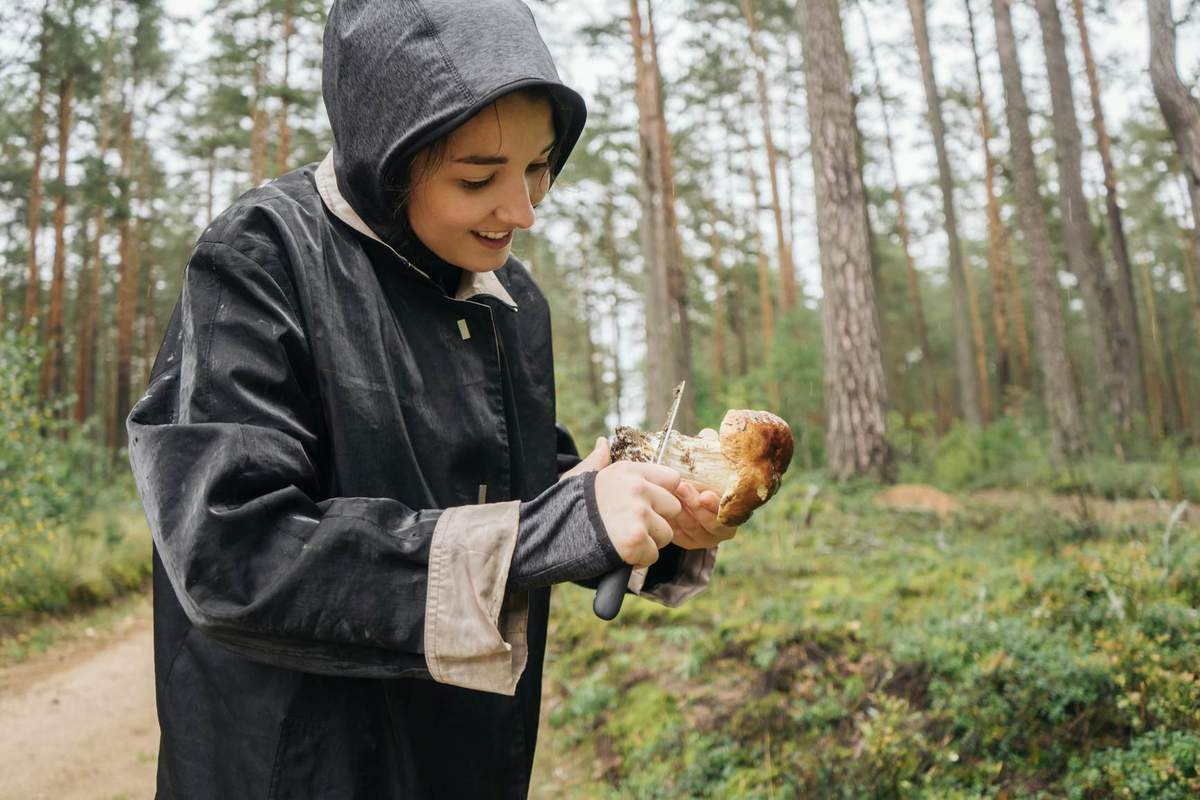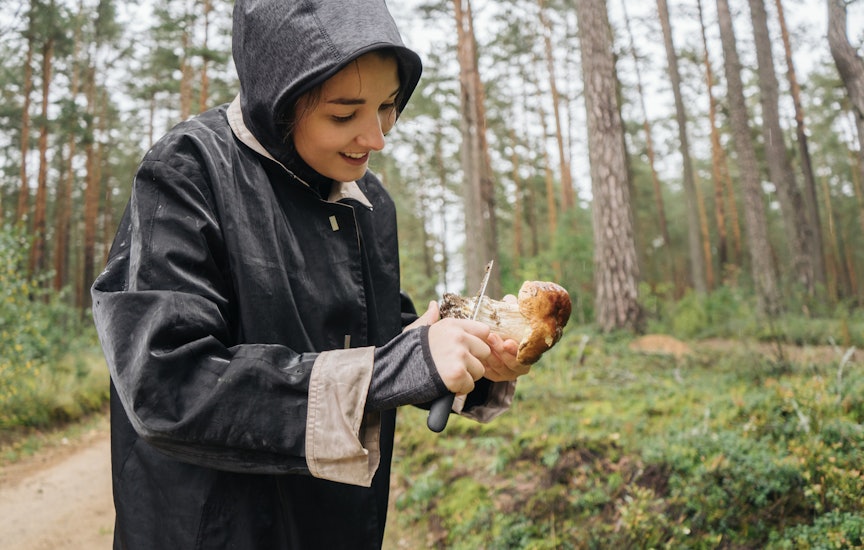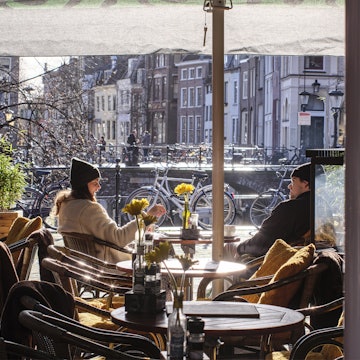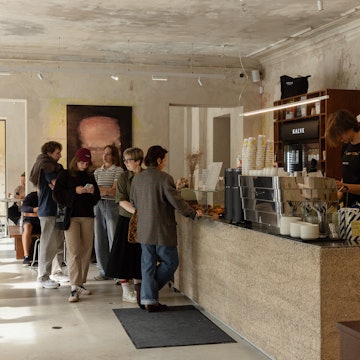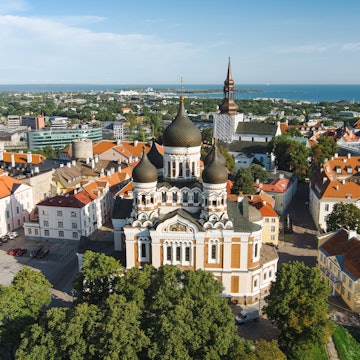

Art Nouveau architecture on Alberta Street in Rīga. Diego Grandi/Shutterstock
Latvia’s capital can cast a spell on even the most experienced travelers. It’s a city where medieval mysteries live alongside contemporary art performances, hundreds of Art Nouveau buildings line historic streets, and the city’s flourishing culinary scene offers traditional Latvian dishes and modern Nordic cuisine. Yet, Rīga is largely undiscovered by mass tourism. It’s perfect for appreciating a tranquil and cultural city without a crowd.
Whether you prefer experiencing warm summer nights or fresh winter mornings, walking around art galleries or spending time in nature, going to local alternative bars or extravagant concert halls, Rīga offers it all.
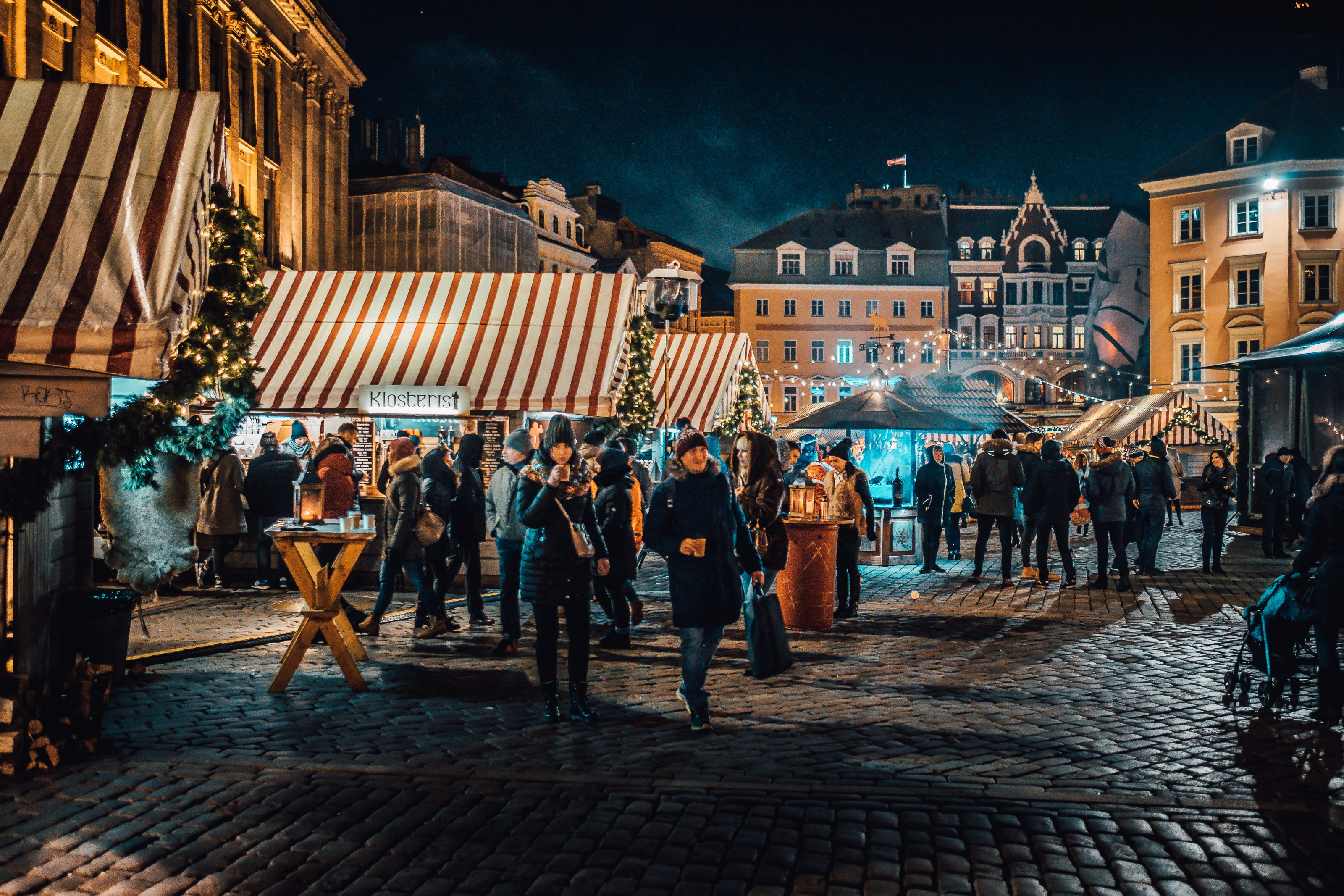
When should I go to Rīga?
The best time for visiting Rīga is summer, when everything is green, the days are long and warm, and there is plenty of sunshine. In the middle of June, the sun rises as early as 4:30am and sets as late as 10:20pm. What could be better than sipping a sparkling drink on a terrace or listening to live music late in the evening while it is still pleasant and light outside? Summertime in Rīga comes with many open-air concerts and other cultural events, most of which are free to attend.
Rīga’s cultural life peaks in August, when the city celebrates its anniversary offering a wide range of events. With the average temperature around 20ºC to 25ºC (68ºF to 77ºF) and only rarely reaching 32ºC (90ºF), Rīga is an excellent summer destination for escaping the heatwaves of Europe's southern countries.
If you are not afraid of cooler weather, a lack of sunlight and possibly heavy rainfall, then other seasons work just as well. Late spring comes with wonderful blossoms in the parks and green spaces of Rīga. Early autumn paints the whole city golden. The middle of winter might surprise you with a marvelous Christmas atmosphere: lovely craft markets, aromatic mulled wine and white snowflakes falling from the pitch-black sky. Avoid visiting Rīga in November or February, which are usually the dreariest months of the year.
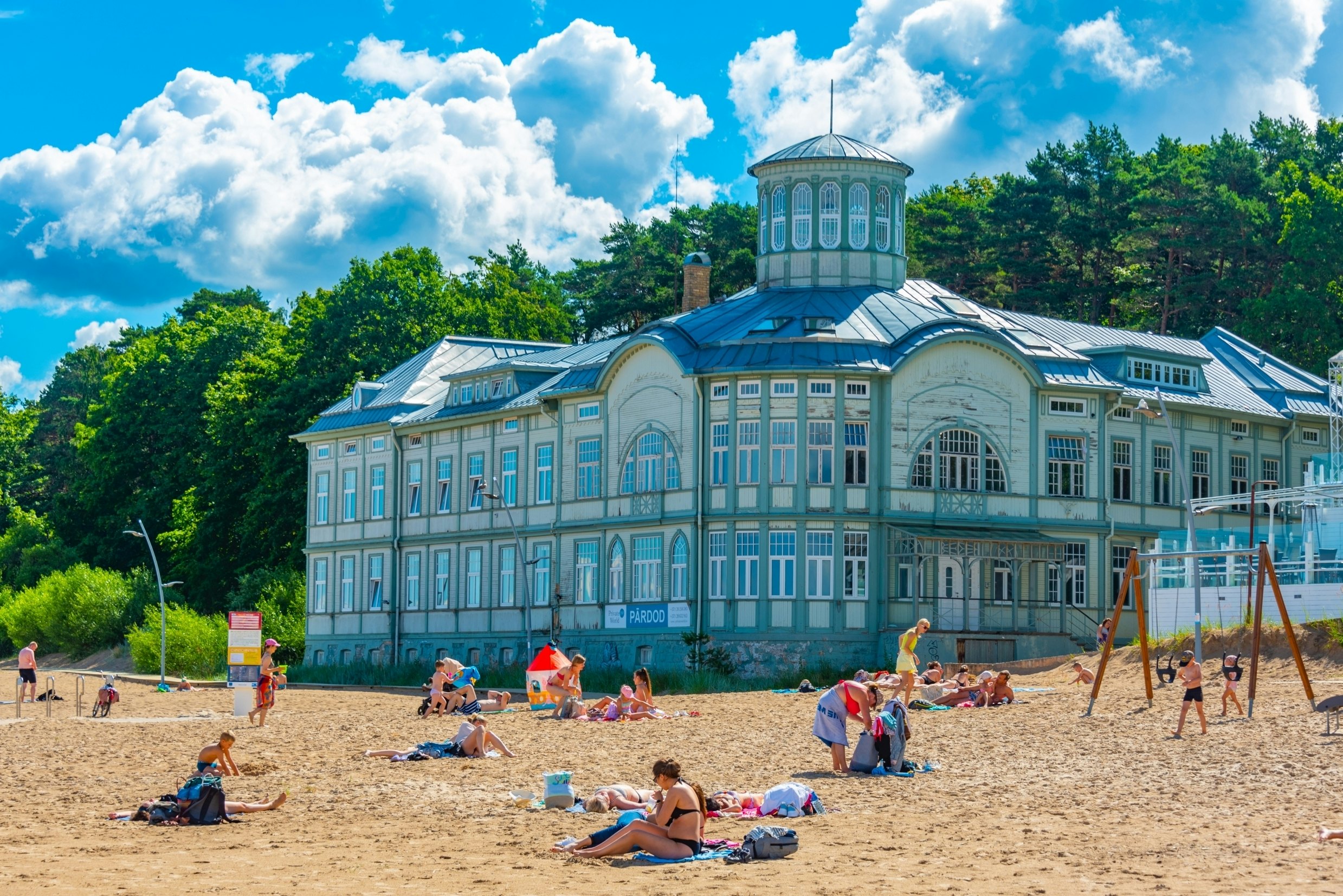
How much time should I spend in Rīga?
If you spend only a weekend in Rīga, you can probably see the most important sites. You can walk around the charming cobblestone streets of the Vecrīga (Old Town), where a rich variety of architectural styles from Gothic to Modern stand side by side. Visit picturesque sites such as the House of the Blackheads, St. Peter’s Church, Rīga Dome Cathedral, Three Brothers, and the Great Guild (closed for reconstruction until 2026); walk along the canal; go to the Freedom Monument and the magnificent Latvian National Opera and Ballet building.
Leave some time for exploring the famous Art Nouveau district around Alberta Street – a place likely to leave you speechless. Visit some of Rīga’s finest museums, such as the Latvian National Museum of Art, the Museum of the Occupation of Latvia and the Zuzeum Art Center.
Adding a couple more days will allow you to enjoy the city at a slower pace and go to lesser-known places and suburbs. Cross the Daugava River and spend a day walking around Āgenskalns. Once a poor district inhabited by fishermen, sailors and workers, it is now an enchanting area with its specific appeal loved by creative souls and hipsters and includes a notable example of wooden architecture and Art Nouveau buildings.
Take a tram to Mežaparks and relax in one of the greenest areas of Rīga – breathe in some fresh air in the pine woods, have lunch by the Lake Ķīšezers and admire countless villas from the 20th century. You can even go to the seaside and spend a day on the beach without leaving the city. But if you do want to reveal a bit more of Latvia, there are many great day-trip destinations you can easily reach from Rīga, such as Sigulda, Cēsis and Jūrmala.
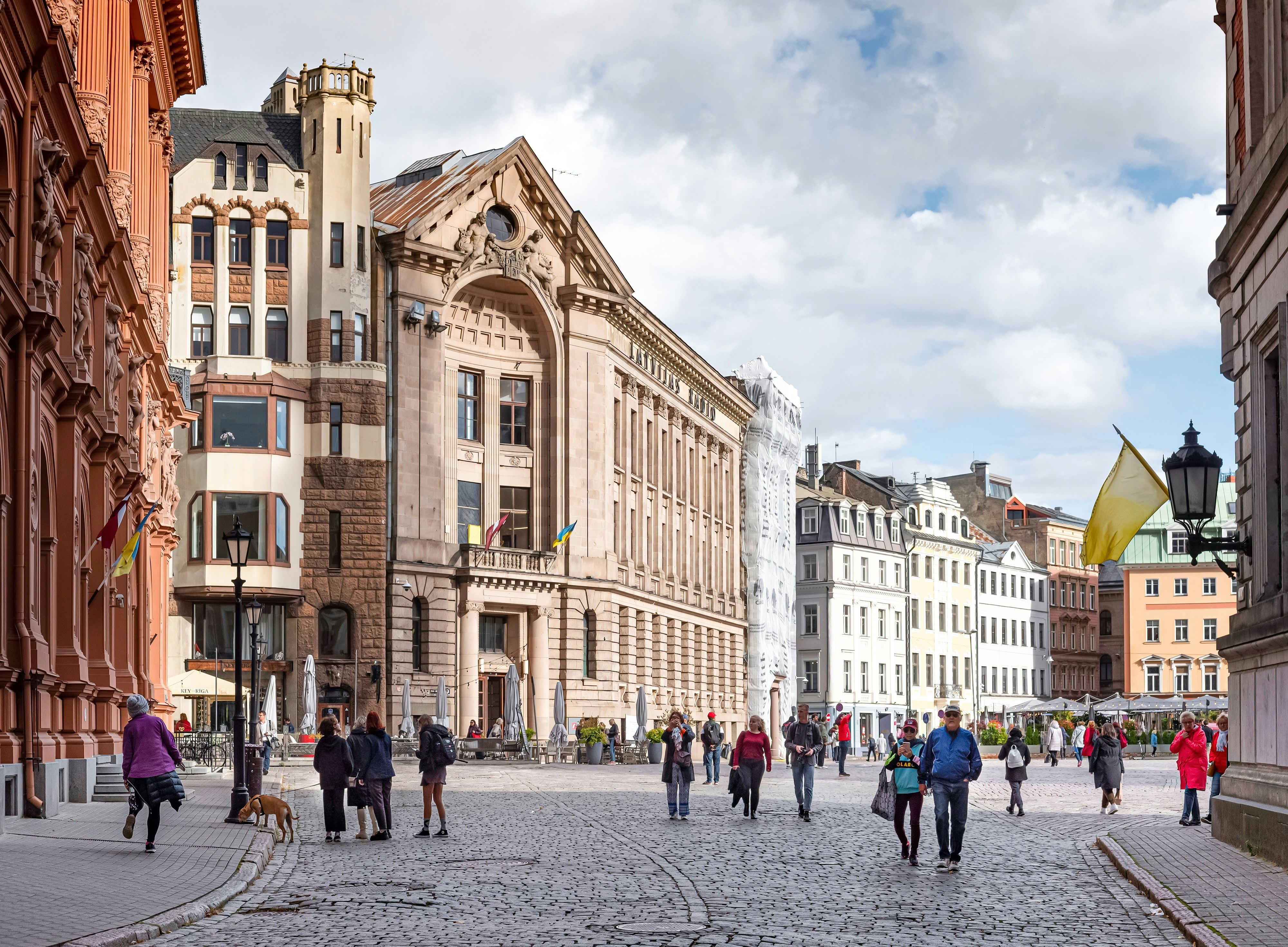
Is it easy to get in and around Rīga?
Rīga Airport is the largest airport in the Baltic states, which makes it a popular place to fly into whether you are just visiting Latvia or heading on to Lithuania or Estonia. After arriving at Rīga Airport, look for the city bus No. 22 which offers cheap and easy transportation to the city center (30 minutes). Alternatively, you might choose the Lux Express shuttle bus, hire a taxi or use the Bolt car-sharing service and drive to the city center yourself.
If you want to reach the city from other European cities, look for long-distance bus offers by companies such as Lux Express, Ecolines and FlixBus, which connect Rīga to cities as far away as Amsterdam. The most popular connections are between Rīga and Warsaw (13 hours), Vilnius (4 hours), Tallinn (4 hours and 30 minutes) and Tartu (4 hours). You can also combine taking a ferry from Helsinki to Tallinn (2 hours) and continuing your way to Rīga by bus.
Rīga is an ideal city for those who favor walking around on foot – it is flat and walkable and offers beautiful architectural details that make any walk a memorable sightseeing activity. Most of the tourist attractions are located in the central part of the city, so if you are staying in Rīga for just a couple of days you may not even need to think about using any transport.
If you are visiting Rīga for a longer time, you can take a bus, trolley bus or tram to escape the main tourist routes, explore the suburbs, relish the seaside or even go for a hike in nature. You can buy tickets and check out timetables and routes on the Mobilly app or Rīgas satiksme website.
Top things to do in Rīga
See Rīga from different angles
Rīga features such diverse architecture that it is worth experiencing it from different perspectives. After walking around the Old Town and popular Art Noveau streets on foot, choose one of the viewing platforms – Latvian Academy of Sciences, St Peter’s Church or Rīga Doma Church – to observe the city from a bird’s-eye view. If you feel adventurous enough, rent a kayak and explore a completely new angle of the city from the canal and the Daugava River. The most popular panorama of Rīga with its church towers trying to reach the sky can be seen from the AB Dam or the National Library of Latvia.

Sample Latvian cuisine in beautiful markets
Rīga is known for its amazing markets, full of fresh vegetables, dairy products, meat and fish. The most famous is Rīga Central Market, one of the largest markets in Europe. Dive into the aisles of the market and go on a culinary journey! Make sure you try out rupjmaize (rye bread), biezpiens (cottage cheese), smoked fish, pickled vegetables, Jāņu siers (a type of cheese), kvass (fermented bread-based beverage) and anything else that attracts your attention. If you find yourself wandering around Āgenskalns, stop by its recently renovated market that has become a real cultural hub and a discovery for culinary tourists.
Embrace the local music scene in Rīga
You cannot say you have been to Rīga if you have not immersed yourself in its cultural scene. Classical music enthusiasts will appreciate the program of Latvian National Opera and Ballet. Those who prefer alternative music will love hearing unknown musicians performing at bars like Aleponija or Atmoda and throughout the Tallin Street Quarter. And jazz fans will be amazed by the atmosphere of M/Darbnīca. Explore the different departments of the Latvian National Museum of Art, and go outside the city center to visit the Ethnographic Open-Air Museum of Latvia or SongSpace, dedicated to the unique tradition of the Song and Dance Festival.

My favorite thing to do in Rīga
I love a lot of things about Rīga, but most of all I enjoy wandering around the city center and spotting interesting architectural details. When it comes to discovering Art Nouveau, most tourists think it is enough to visit Alberta Street or Elizabetes Street. But the whole city center is full of wonderful examples of this architectural style waiting to be admired. Almost every building has its style, character and special vibe. Even after seeing the same buildings countless times, I can still find new details on their facades.
Tērbatas, Krišjāņa Barona, Aleksandra Čaka and Brīvības Streets are the ones you might start with. Some of my favorite examples can be found at 33/35 Tērbatas, 58 Brīvības and 26 Aleksandra Čaka. Lift your eyes, get your camera out and be ready to be surprised by what you will see. When I get tired of the hustle and bustle of the streets, I go and relax at Ziedoņdārzs, one of the nicest parks in Rīga.
How much money do I need for Rīga?
Rīga is an affordable destination providing a wide range of activities for all tastes and budgets. Many travelers say that Rīga is a real gem, amazingly beautiful, not too crowded and relatively inexpensive compared to other European capitals. You can explore without spending much by taking free tours, strolling along a river promenade, visiting tiny museums of local poets or having picnics in parks. Or you can expand your budget to stay at five-star hotels and savor world-class meals and the finest theater.
Generally, it’s best to avoid the overpriced Old Town and look for more affordable and authentic experiences in the city center, especially when it comes to cafés, restaurants and bars. You’ll save money and meet local people.
Average costs:
Dorm bed: From €15 (US$18)
Basic hotel room for two: From €30 (US$35)
High-end hotel room for two: From €100 (US$117)
Self-catering apartment: From €30 (US$35)
Public transportation ticket: €1.50 (US$1.75)
Museum ticket: €2–€10 (US$2.30–US$12)
Opera or ballet ticket: €20–€55 (US$23–US$64)
Theater ticket: €15–€55 (US$18–US$64)
Concert ticket: From €15 (US$18)
Coffee: €2–€4 (US$2.30–US$5)
Pastries: €1–€4 (US$1.17–US$5)
Main course meal: From €12 (US$14)
Beer: €3–€5 (US$3.50–US$5.80)
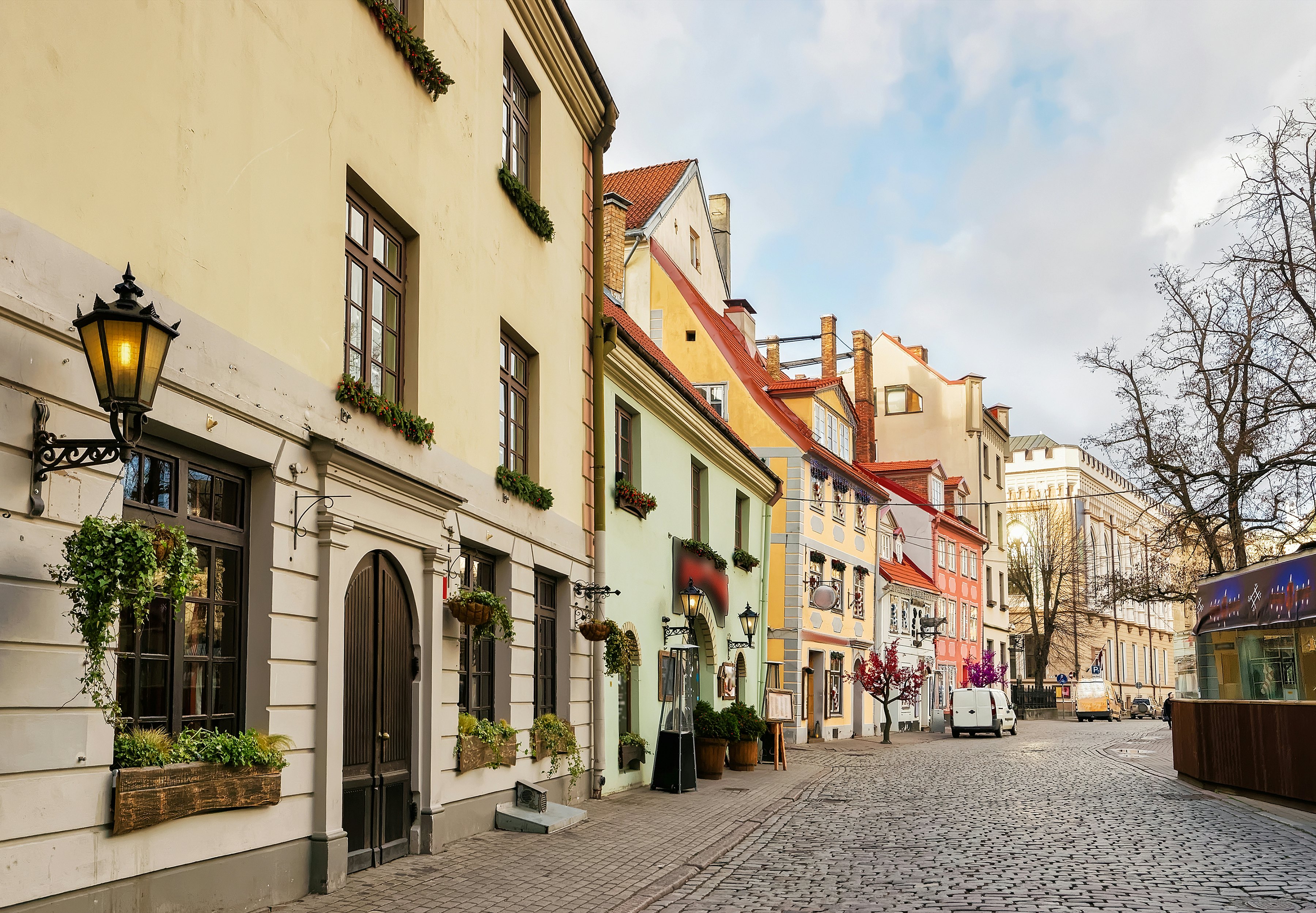
What language is spoken in Rīga?
The official language in the country is Latvian, but many people in Rīga speak English well, especially in tourist areas so you should find it easy to get by. Most museums provide exhibitions with English translations. Menus and services in cafés, restaurants and bars are typically available in English too. Keep in mind that Latvians might seem cold or reserved at first sight, but that is only on the surface. Deep in their hearts, they are warm and hospitable; it just takes a little time for them to open up to strangers.
Can you drink the tap water in Rīga?
Yes, you can, and it is even suggested to do so! The water in Rīga is clean and tasty. Bring your water bottle, refill it with tap water, stay hydrated and produce less plastic waste.






